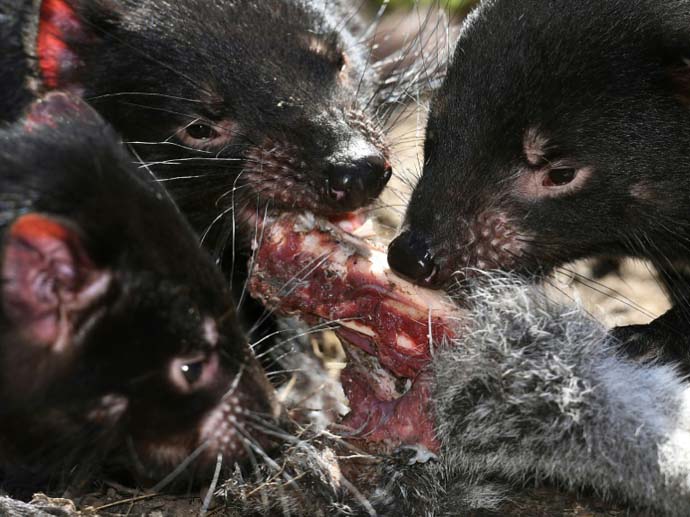A contagious cancer is driving the population of Tasmanian devils into extinction, but these carnivores prove to be stronger and inspire hope for their survival.
Three decades after the first cases of a fatal contagious cancer spread through the populations of Tasmanian devils, experts are now seeing change in the 15 percent of those that have survived.
Cancer spreads via the bite of an infected Tasmanian devil during mating or when they challenge each other jaw to jaw. However, scientists have discovered that approximately 15,000 to 18,000 of those that were infected with cancer are showing signs of an immune response, according to a report by AFP.

Experts and scientists have found the disease to be almost fatal, however, about two dozen of the infected animals examined showed antibodies that helped them survive.
“We have seen animals that are not contracting the disease. We have seen animals that even if they contract the disease, they survive much longer,” Rodrigo Hamede, of the University of Tasmania, told AFP. “We are also seeing a small number of animals that have managed to regress tumors – in other words, to cure themselves of the cancer.”
Experts focused on the case shared that they have been seeing a significant behavioral changed that have helped the Tasmanian devils to survive longer and keep their population from declining further.
“The rate of decline was serious and the risk of extinction was there,” Chris Coupland, senior keeper of Devils @ Cradle, which is a refuge that allows tourists to meet the Tasmanian devils up close, told AFP. “It’s still there.”
Coupland reported that they had been seeing other “promising trends” that help Tasmanian devils keep their population at bay.
He said the devils are mating at a younger age now and females are heating more than once a year. The survivors are apparently more sexually active at an earlier age and they reach the mating weight more quickly.
Humans are also helping out by developing DNA databases for the creatures that allows other centers to breed the animals with “maximum genetic diversity.”
The Tasmanian devils are currently listed as “endangered” on the International Union for the Conservation of Nature (IUCN) Red List. If the population of the devils decreased to only 10,000, AFP has reported that that is the real risk.






